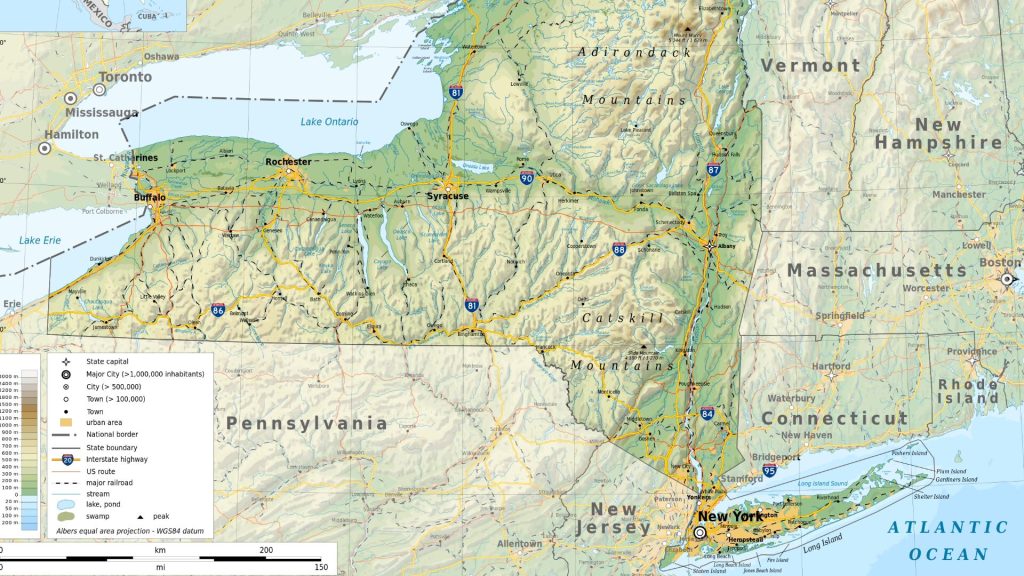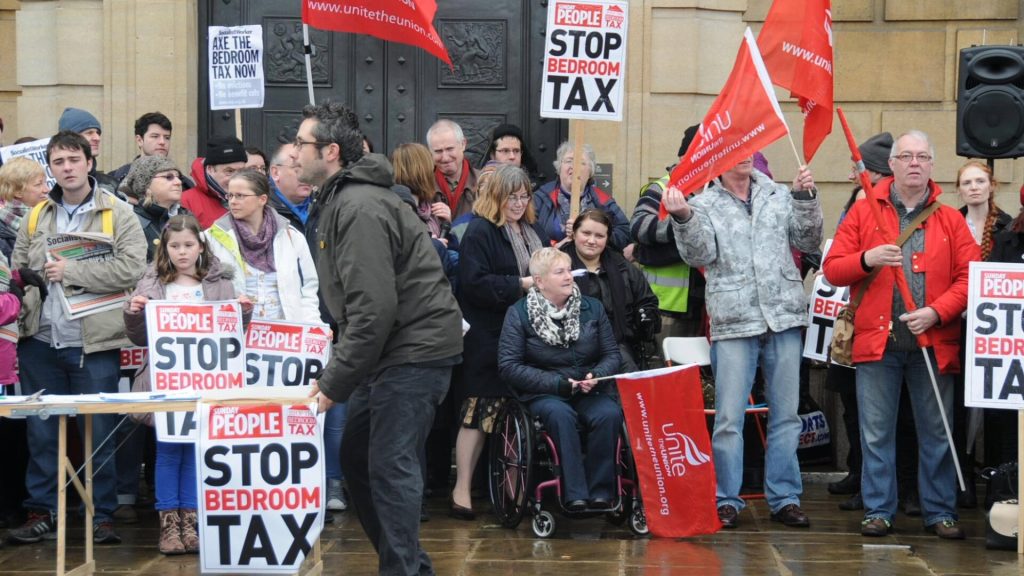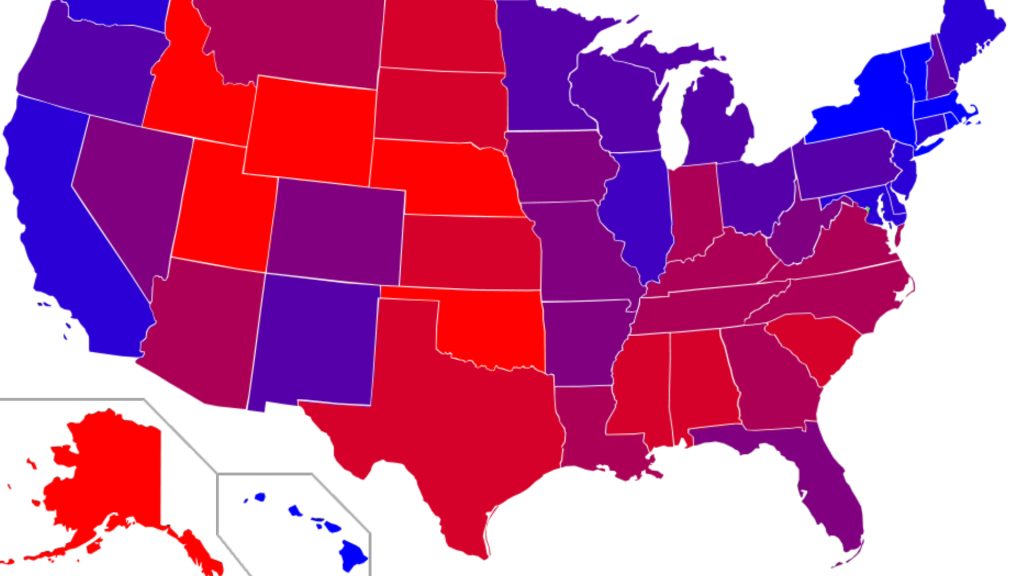Populations rise and fall depending on a variety of factors. While the populations of states can fluctuate, there’s a trend that seems to be taking hold in the United States. More and more, residents of so-called blue states are leaving. And they may be taking up residence in red states where living conditions may be more favorable.
Where Is The Mass Migration Happening?
Some percentage of people relocate every year. Many of those move from one state to another state. They may do so for a variety of reasons that include jobs, family issues, education, and more. But recent years have seen a significant migration out of blue states and into red states-and it’s not surprising when you consider the economics involved.

Most of the population movement seems to be happening in so-called blue states. These are states that tend to vote for Democratic candidates more than Republicans. They may also be states that have higher taxes and a higher cost of living than red states, which are most often led by Republicans. But is there a connection?
Which Blue States Are People Leaving?
The blue states that have lost the most population are California, New York, Illinois, and New Jersey. One estimate says that more than five million people have left those states between 2013 and 2023. That’s a significant number by any measure and it may point to issues that blue states need to address.

It’s not surprising that the four states we’ve mentioned are the hardest hit by the mass migration. These are states with some of the highest tax burdens in the country. California has the highest state income tax, and New York and New Jersey are third and fourth. New Jersey and Illinois are the two states with the highest property taxes.
Which Red States Have Experienced The Most Significant Population Growth?
The states that have been experiencing the most significant population growth are all in the Southeast. There may be lots of reasons for the shift, but one possibility is that those states now have a combined economic output that’s higher than the Northeast. That’s a first in American history, since the Northeastern “industrial” states have been economic powerhouses.

The red states that have seen the most dramatic increases in population are all in the Southeastern part of the country. They include Florida, Texas, South Carolina, North Carolina, and Georgia. It’s not surprising that these states have some commonalities that include a lower cost of living. At a time of high inflation, that’s attractive.
Are Taxes Playing A Role?
One of the biggest potential drivers that can convince people to move is the issue of taxation. Taxes in blue states tend to be significantly higher than they are in red states. That means that paychecks stretch a little further in states where taxes are lower. People know that they’ll have more spending power when taxes are lower.

Some of the states with the biggest growth are those that have no state income tax. As of 2024, there are 9 states that have no state income tax. These include Alaska, Florida, Nevada, New Hampshire, South Dakota, Tennessee, Texas, Washington, and Wyoming. Washington levies a state capital gains tax on high earners and is a blue state.
What About Cost Of Living?
The cost of living is undeniably a factor when people decide where to live. It’s how much they pay for commodities like clothing and groceries. The cost of living impacts everything from utilities to healthcare. With a low cost of living, it’s easier to buy a home and save for retirement, not to mention paying for everyday expenses.

The states with the lowest cost of living are almost all in the Southeast or Midwest. They include Mississippi, Arkansas, Tennessee, Alabama, Oklahoma, and West Virginia. These are all red states. These states may also have fewer programs that benefit the public. There are some people who prefer that and would rather keep their money than pay taxes.
Business Laws And Taxes May Be Driving The Trend
Individual expenses and taxes aren’t the only consideration when people relocate. More and more, we’re moving toward a gig economy. Many Americans work for themselves. As small business owners, they are drawn to states where business laws and taxes are more advantageous than in blue states. In both cases, they can save money and keep more business income for themselves.

In blue states, particularly larger states like New York and California, there tend to be high business taxes. In addition, it’s likely to be more expensive to incorporate and file other necessary business documents such as annual reports. The combination of these things may drive entrepreneurs away from blue states and into red states like those in the Southeast.
Why Celebrities Are Leaving California
One of the migrations that’s been getting a lot of attention is the exodus of celebrities from California. The state’s high taxes have traditionally taken a big bite out of celebrities’ money. There’s no end in sight. Some California legislators want to take more from celebrities than ever before with a proposed wealth tax that would take effect in 2026.

The wealth tax would impose a 1.5% surtax on any California resident with assets of $1 billion or more. Admittedly, that affects only a few people. What gets tricky for celebrities is that the proposed law includes a 1% surtax on assets over $50 million. It also gives the California Franchise Tax Board the right to pursue out-of-state assets.
Economist Stephen Moore Weighs In
Economist Stephen Moore is someone who has been paying attention to the mass blue state migration and he has thoughts on what it means. Specifically, he pointed to two issues we’ve already discussed: taxes and the business environment. He believes both have played a role and will continue to do so unless blue states wake up.

The first issue, Moore says, is income taxes. California recently increased its top tax rate to more than 14%. Meanwhile, people who move to Texas or Florida can pay nothing, since those states don’t have income taxes. The business issue isn’t just about taxes and fees. It’s also about red states having momentum when it comes to investment in businesses.
What Can Blue States Do To Reverse The Trend?
Blue states aren’t a lost cause but they do need to sit up and notice the trends. If they continue to raise taxes, then more people are going to want to leave-if only to protect their money. With businesses leaving, there are fewer jobs and more unemployment on the horizon. That’s something no governor wants as part of their legacy.

In order to stop their populations from decreasing, blue states may need to embrace cost-cutting measures and take steps to address taxpayers’ concerns. State programs may be cut. It’s unlikely that blue states will do away with the income tax entirely, but cutting taxes is likely to be on the table for states that want to address the problem.
What Does The Mass Migration Mean For Politics?
An interesting side-effect of the mass migration from red to blue states may be surprising for both sides of the political spectrum. Georgia is an example. Traditionally a red state, Georgia voted for Joe Biden in 2024. It was the first time they’d voted for a Democratic presidential candidate since 1992.

An influx of voters from traditionally blue states might signal a shift. While these voters may have moved to red states to save money, they’re also likely to have liberal or progressive views about social issues. In some cases, they may be voting for Democrats. In swing states like Georgia and Florida, that could make a big difference in elections.
The Fastest Growing States Might Surprise You
You might be wondering which red state has been experiencing the biggest population growth as a result of mass migration. You wouldn’t be alone if you guessed that the state in question was Texas or Florida. They’re both big states with large populations and we’ve already mentioned why they might be attractive to taxpayers.

The answer to which state is growing the fastest is a surprising one: it’s South Carolina! The state offers a low cost of living, reasonable taxes, and a welcoming environment for businesses. It’s also a state with plenty of natural beauty, including gorgeous beaches and stunning views of the Blue Ridge Mountains. It’s no wonder people want to move there!
Purple Might Be The Future
It remains to be seen whether the mass migration will continue. Stephen Moore certainly thinks it will. In addition to the issues we’ve already mentioned, he thinks that more businesses will want to move to “right to work” states where they don’t have to worry about unions or collective bargaining. He might be right.

If this “blue to red” movement continues, it could impact everything from the economy to our politics. Shifting populations could mean that more states hang in the balance in presidential elections. Given the increasing polarization of our politics, that might be a very good thing.






